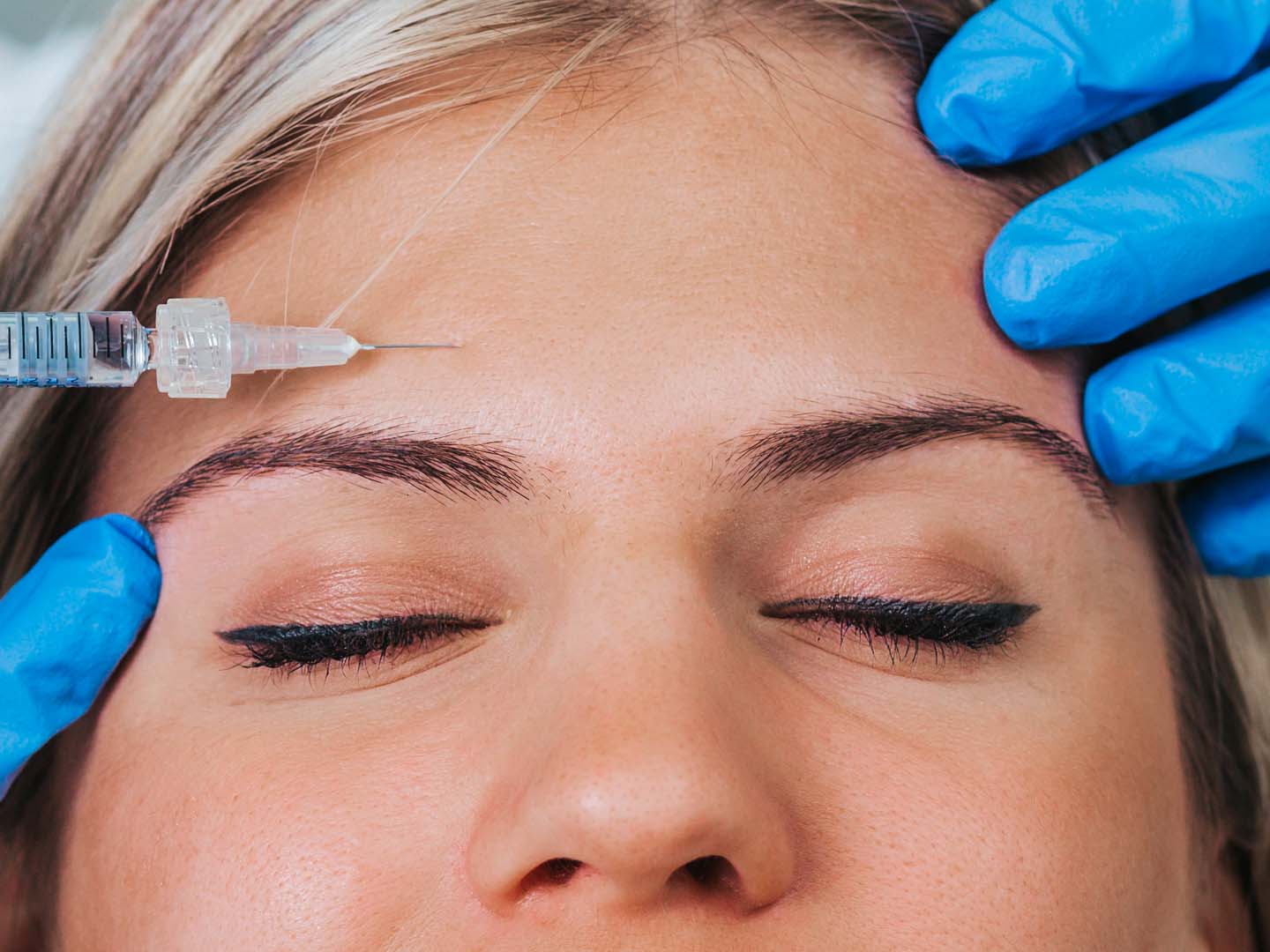
Key Takeaways
- Forehead fillers smooth deep lines and can improve contour, but the treatment requires advanced skill due to complex anatomy.
- The most suitable candidates are patients with static forehead wrinkles or those seeking non-surgical forehead contouring.
- Results typically last 9–15 months, though lifestyle and skin quality affect longevity.
- Risks include vascular complications, irregularities, and swelling, highlighting the need for specialized training.
- Alternatives such as Botox, skin resurfacing, or energy-based devices may be more appropriate for some patients.
What Are Forehead Fillers and How Do They Work?
Forehead filler is a minimally invasive treatment that uses dermal fillers, most commonly hyaluronic acid-based products, to soften static lines, restore lost volume, and improve the contour of the upper face. With age, repeated expressions and thinning skin cause forehead lines to become more visible, even at rest. Fillers are carefully injected beneath the skin to provide structural support, fill in creases, and smooth the surface.
Unlike Botox, which relaxes muscles to reduce dynamic wrinkles, dermal filler forehead rejuvenation treatment directly addresses volume loss and deep static folds. This makes it an option for patients who want subtle reshaping or improvement in areas where Botox alone cannot fully correct wrinkles.
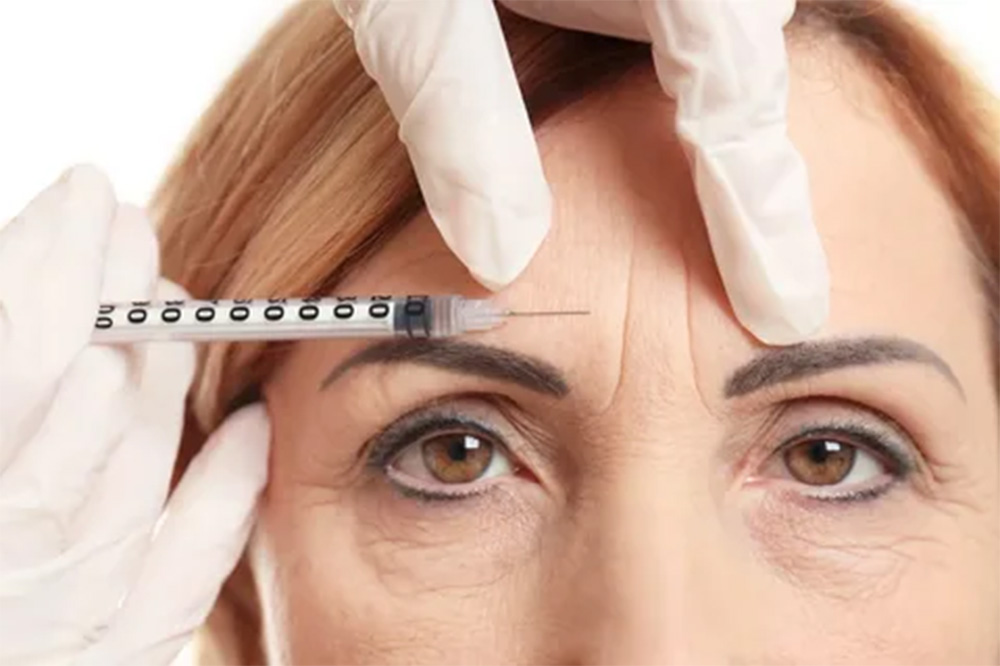
Benefits of Forehead Fillers
The main appeal of forehead fillers lies in their ability to deliver visible results without surgery. Benefits include:
- Softening static lines that remain even when the face is at rest.
- Non-surgical forehead contouring, creating a smoother and more youthful profile.
- Improving skin hydration and texture, since hyaluronic acid attracts water.
- Quick procedure with minimal downtime, making it convenient for patients.
- Reversible treatment, as HA fillers can be dissolved with hyaluronidase if needed.
When performed with advanced filler injection techniques, the outcome can be subtle and natural, blending seamlessly with the patient’s natural features.
What Does Forehead Filler Treatment Look Like?
The procedure begins with a consultation and assessment of the patient’s anatomy, skin condition, and aesthetic goals. During treatment, the forehead is cleaned, and a topical numbing cream or a local anesthetic may be applied.
The injector then uses a microcannula or fine needle to place small amounts of filler at carefully selected depths. Depending on the patient’s needs, filler may be deposited along deep horizontal lines, across the central forehead, or strategically placed for contouring.
A session typically takes 20–30 minutes, with most patients experiencing only mild swelling or redness afterward. While normal activities can usually resume the same day, patients are advised to avoid strenuous exercise, heat exposure, and alcohol for at least 24 hours.
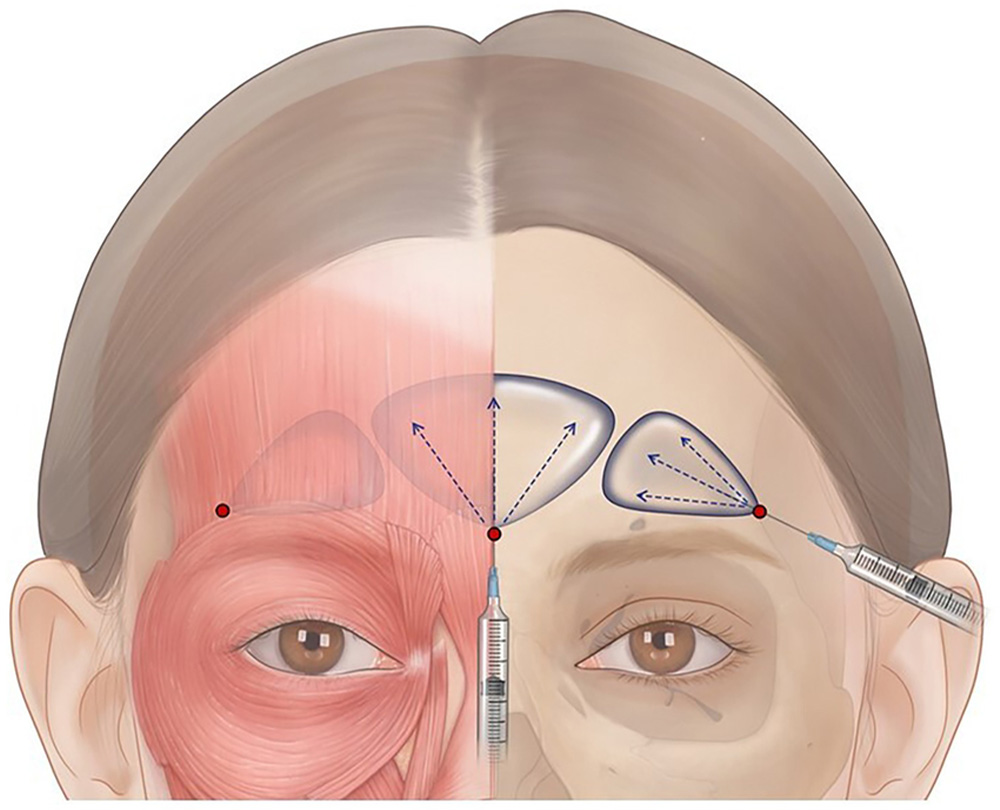
What Is the Best Dermal Filler for Forehead Lines?
Choosing the best filler for forehead lines depends on wrinkle depth, skin quality, and patient expectations. Generally, a smooth, cohesive hyaluronic acid filler is preferred for this delicate area. Products designed for integration into superficial layers, such as Juvederm Volbella, Belotero Balance, or Restylane Refyne, are often selected because they minimize the risk of lumps and irregularities.
Thicker fillers may occasionally be used for deeper grooves but must be placed with extreme caution due to the forehead’s vascular anatomy. The injector’s expertise matters as much as the product choice, making forehead filler training essential for safe outcomes.
Are There Side Effects of Forehead Filler Treatment?
Like any injectable procedure, forehead fillers carry side effects. The most common are mild and temporary, such as swelling, redness, or bruising at the injection site. Some patients may experience tenderness or a feeling of tightness in the treated area, which usually resolves within days.
Less common but possible side effects include asymmetry, visible filler, or the Tyndall effect (bluish discoloration if filler is placed too superficially). These issues highlight the importance of correct filler selection and careful injection technique.
How Long Do Fillers Last on the Forehead?
The longevity of forehead filler results varies by product, metabolism, and placement technique. On average, results last 9 to 15 months. Hyaluronic acid fillers tend to degrade gradually, meaning the effects diminish slowly rather than disappearing abruptly.
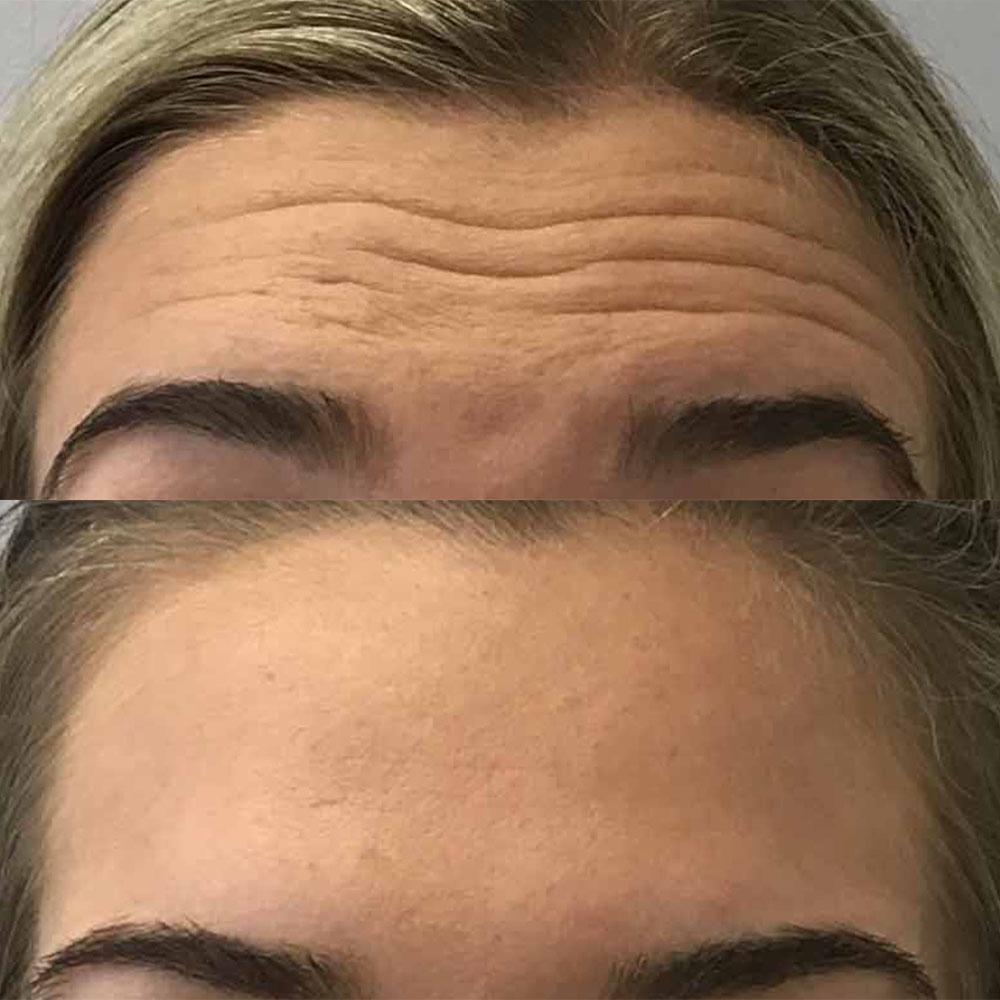
How Often Do You Need Forehead Fillers?
Most patients return for maintenance once a year, although those with faster metabolisms or more pronounced lines may require touch-ups every 9–12 months. To make results last longer, patients should:
- Protect their skin from sun exposure with daily SPF.
- Maintain good hydration and avoid smoking, which accelerates filler breakdown.
- Follow a consistent skincare routine with collagen-supporting ingredients.
- Schedule maintenance before results fully fade, preventing the return of deep static lines.
What Are the Risks of Forehead Fillers?
Forehead filler risks are greater than in many other areas because of the region’s unique anatomy. The forehead has limited soft tissue, meaning fillers lie close to critical blood vessels that connect to the eye. Incorrect placement can lead to serious complications, including vascular occlusion and even blindness.
Other risks include persistent swelling, irregularities, or infection. For this reason, forehead filler should only be performed by experienced injectors with thorough knowledge of advanced filler injection techniques. Emergency preparedness, including the availability of hyaluronidase and protocols for vascular compromise, is essential.
Who Is and Isn’t a Good Candidate for Forehead Filler?
Ideal candidates are patients with visible static forehead lines or mild to moderate volume loss who prefer a non-surgical approach. They should have realistic expectations and an understanding that results are temporary.
Patients who may not be good candidates include those with:
- Predominantly dynamic lines that respond better to Botox.
- Extremely thin skin where filler may appear irregular.
- Unrealistic expectations of complete wrinkle removal.
- Contraindications such as pregnancy, active infection, or allergy to filler components.
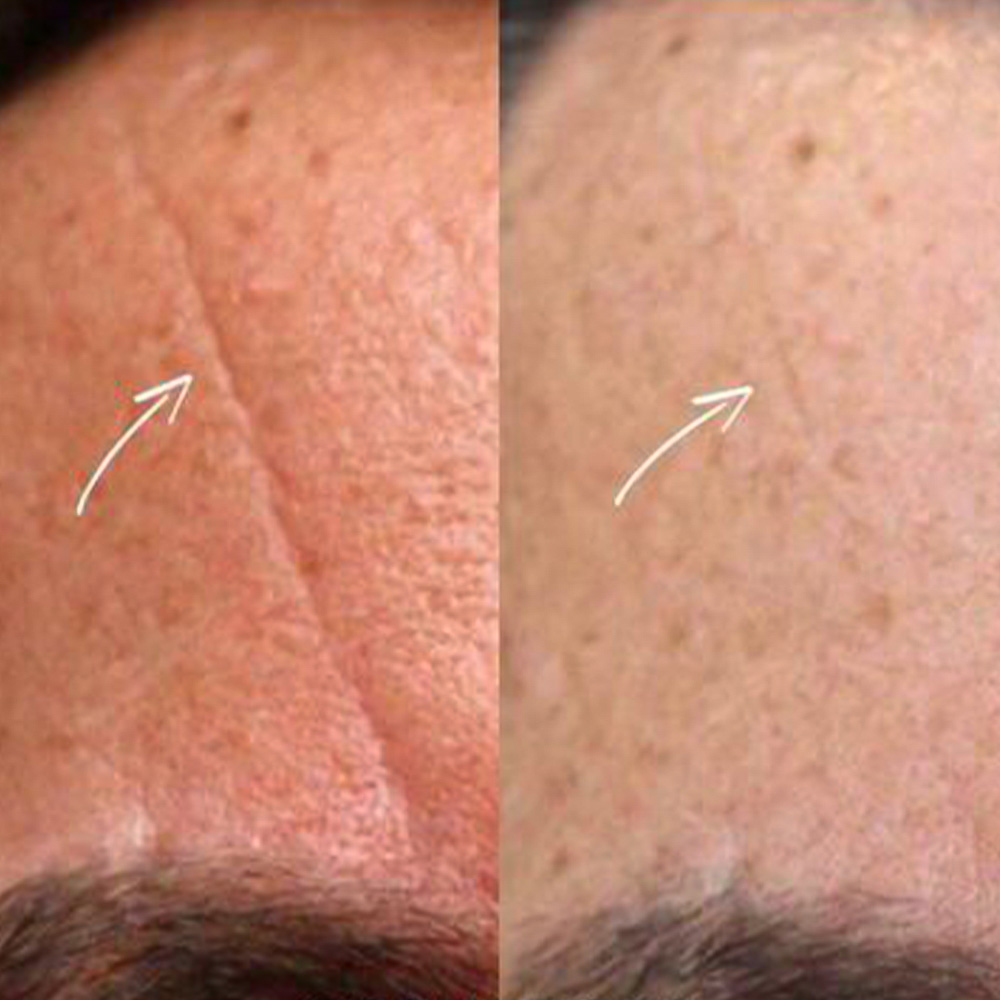
Alternatives to Using Fillers on the Forehead
Not all patients will benefit from fillers, and alternatives should always be discussed. Options include:
- Botox injections, which relax forehead muscles and reduce dynamic wrinkles.
- Laser resurfacing or microneedling, which stimulate collagen and improve skin texture.
- Radiofrequency or ultrasound therapies, which provide non-surgical tightening.
- Topical retinoids and medical-grade skincare, useful for early lines and long-term prevention.
These alternatives can be combined with fillers for more comprehensive rejuvenation.
Conclusion: Are Forehead Fillers Safe?
Forehead fillers can provide impressive rejuvenation for carefully selected patients, offering smoother lines and subtle contouring without surgery. However, the procedure carries a higher risk profile than many other filler treatments due to the forehead’s vascular anatomy. For this reason, forehead injections should only be performed by highly trained professionals with experience in advanced filler injection techniques.
For medical aestheticians looking to expand their expertise, investing in specialized education such as online aesthetic medical training and dedicated forehead filler training ensures both safe practice and predictable outcomes. Documenting forehead filler before and after cases also helps patients set realistic expectations and understand the possibilities of treatment.
FAQ
Can forehead fillers go wrong?
Yes. Complications such as vascular occlusion or irregularities are possible, which is why treatment should only be done by trained professionals.
Is Botox or fillers better for the forehead?
Botox works best for dynamic wrinkles, while fillers address static lines and contouring. Sometimes a combination provides the best result.
At what age should you get forehead fillers?
There is no strict age. Candidates are usually in their 30s to 50s, depending on wrinkle severity and individual needs.
Is forehead filler painful?
Discomfort is usually minimal, especially with the use of topical anesthetics or fillers containing lidocaine.
How expensive is forehead filler?
Costs vary depending on product choice, injector expertise, and location, but typically range between $600 and $1,200 per session.
Sources
- Kapoor KM, Chatrath V, Li CQ, Bertossi D. Pinch Anatomy of Forehead: An Injection Guide for Forehead Filler Treatment. Facial Plast Surg. 2022;38(2):156-162. doi:10.1055/a-1730-8436 Available from: https://pubmed.ncbi.nlm.nih.gov/34983076/
- Ahn HS, Kim HM, Oh W, Yi KH, Kim J, Kim HJ. Singular entry point technique for forehead and temple filler augmentation: Anatomical and clinical perspectives. J Cosmet Dermatol. 2024;23(10):3195-3201. doi:10.1111/jocd.16411 Available from: https://pubmed.ncbi.nlm.nih.gov/38837504/
- Bertossi D, Lanaro L, Dell'Acqua I, Albanese M, Malchiodi L, Nocini PF. Injectable profiloplasty: Forehead, nose, lips, and chin filler treatment. J Cosmet Dermatol. 2019;18(4):976-984. doi:10.1111/jocd.12792 Available from: https://pubmed.ncbi.nlm.nih.gov/30444074/
- Hong WJ, Liao ZF, Zeng L, Luo CE, Luo SK. Tomography of the Forehead Arteries and Tailored Filler Injection for Forehead Volumizing and Contouring. Dermatol Surg. 2020;46(12):1615-1620. doi:10.1097/DSS.0000000000002561 Available from: https://pubmed.ncbi.nlm.nih.gov/32740211/
Disclaimer:
This article is intended for licensed medical professionals. All protocols, dosages, and treatment insights referenced herein are based on published literature. The content is not intended to encourage application, diagnosis, or self-treatment of unlicensed individuals, and should not be used as a substitute for the clinical judgment of a qualified healthcare provider.

